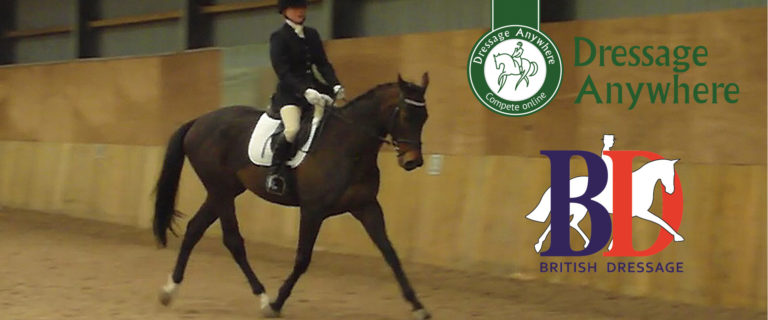What Stops You From Relaxing Properly
What stops you from relaxing properly? Many people don’t relax properly because they feel boxed in (consciously or subconsciously). Boxed in between the ‘because ofs‘ (past) and the ‘what ifs‘ (future). A little trapped in between everything that caused you to be where you are right now, and your future ahead with its challenges, demands, risks and uncertainties. Any resulting stress affects your mental-emotional/social behaviour as much as your performance at work or at play. The good news is that you can affect this greatly, it is not difficult to do.
Savouring the pleasures in life as they occur, helps you become fully engaged in activities, and creates a greater capacity to deal with adverse events. By focusing on the here and now, you are less likely to get caught up in worries about the future or regrets over the past, you are less preoccupied with concerns about success and self-respect (self-esteem is unhelpful terminology), and are better able to form deep connections with others. Fashionably called mindfulness with courses to teach you aplenty, it simply means that you are aware. From self-preservation (oh bummer, I didn’t see that lion hiding and that is now eating me) to appreciation of (perhaps even gratitude for) any glorious thing in Nature… live with Perception switched on.

Relaxing vs. Relaxation
Before you start, there’s relaxing and there’s relaxation… Riding a horse may be relaxing, so may be singing in a choir, fishing or reading a book [2]. For your body, relaxation happens ONLY when a switch is moved: when your sympathetic tone is high then your body is in fight/flight mode and… SWITCH… now your parasympathetic tone is high, your body is in proper relaxation and healing mode. It is like a dimmer switch that may switch on a little when you read a lovely book, or sit and watch the sunset. It goes full blast relaxation when you meditate properly and when you sleep well. Parasympathetic dominance does not switch on when you ride a horse, when you sing or fish. Oh and, just so you know, the benzodiazepine receptor agonists (BzRAs) type of drugs given for insomnia reduce stage 3–4 sleep (NREM-REM cycles) from 4% to 1%… So you would be out for the count but you’re not repairing as much as sleep is meant to repair you. [Chronic hypnotic efficacy of estazolam, Lamphere J, Roehrs T, Zorick F, Koshorek G, Roth T, Drugs Exp Clin Res. 1986; 12(8):687-91]. On a similar note, alcohol allows you to fall asleep quicker but it causes warring Alpha and Delta brain waves which leads to disrupted sleep. By ‘sleeping well’ I mean natural sleep, not sleep induced by drugs or alcohol.
Just like weightlifting changes the size of your biceps, meditation shapes a new brain for you and it changes your blood markers. After eight weeks of meditation, functional MRI (fMRI) scans show the fight/flight centre to shrink . This brain area called the amygdala is involved in the initiation of your body’s response to stress. At the same time, your pre-frontal cortex (associated with higher order brain functions such as awareness, concentration and decision-making) becomes thicker. The connection between the amygdala and the rest of your brain gets weaker, whilst connections between areas associated with attention and concentration get stronger. Your blood changes with a reduction in biomarkers of stress and inflammation (C-reactive proteins, interleukin 6 and cortisol) all of which are associated with disease.
The long term effect of meditation is, that, on fMRI, a resting brain of people who have done some 40,000 hours of meditation, looks similar to a brain of a normal person doing meditation. Their baseline has changed and relaxation is their default state. Interestingly, in expert meditators the pre-frontal cortex is no longer bigger than expected… suggesting that this way of thinking doesn’t require any concentration. Stop weightlifting (effort) and your biceps returns back to ‘normal’ size…
A good teacher is priceless
The easiest and single most do-able meditation is Transcendental Meditation (TM). The crux of this is, that you will be given a ‘meaningless’ individual (and to remain completely private) Sanskrit word to repeat in your head over and over again. The training you’d do with a TM teacher and within a group (collective meditation somehow enhances it) is, to get your Sanskrit word linked (conditioned) to your brain going into a meditative state. It’s as simple as Pavlov ringing a bell triggering hydrochloric acid production in his dog (bell was rung prior to feeding, dog produces stomach acid and eats… eventually just ringing the bell without food would also produce stomach acid). So the Sanskrit word is a simple conditioning reflex, you train your brain to raise parasympathetic tone on hearing ‘your’ word. Repeating your Sanskrit word over and over again also deflects other thoughts coming into your brain.
The easiest and single most do-able mindfulness is you focusing on the air flowing through your nasal passages as you breathe-in through your nose, and breathe-out through your nose (in your mind say “I am breathing in… I am breathing out”, and feel the air go in and out). You could sit on an upright chair, ideally with your back not resting against it but self-supporting. You feel your feet on the ground, you feel your thighs on the chair… good teachers can help you be aware of the here and right now. Lying on your back with an eye pillow on your eyes/forehead is great but I easily fall asleep in that position. The pace of breathing becomes slower if you do the following. After you breathe out, count to 4 before you breathe in again. It slows you down and before long, you can wait for the count of 5 before you want to breathe in again. As smooth, rhythmic breathing slows down and down, you stop thinking about counting. Simply be quiet and experience what’s around you, here and now, the comfy seat, the raindrop on a leaf, the fragrant flower, colours, birdsong, the Boeing 747 overhead tempting to disturb the peace (whose life’s perfect). In old money I call this count your blessings.
“Whichever breathing pattern you follow, always keep it smooth with a steady rhythm, this relaxes irrespective of how many counts in, hold or out. With 4-7-8 yoga breathing – with the tip of your tongue lightly touching the ridge of tissue at the back of your upper front teeth- you breathe in through your nose quietly for count of 4, you hold your breath for the count of 7, you forcefully breathe out through your pursed lips for the count of 8. Useful as this is for insomniacs and patients with COPD, it is NOT the most useful breathing technique for mindfulness. Instead I suggest that you, after smoothly breathing out through your nose, take a 4 or more counts respiratory rest (i.e. a relaxed hold) which delivers the medical benefits from Buteyko breathing and then you smoothly breathe in through your nose again. Slowly slowing down a rhythmic breathing rate.“ (Han van de Braak BSc LicAc MCSP MBAcC (Retd)
Astute as you are, you might say, why not do the three simultaneously? The binaural frequencies encourage your brain to develop theta and delta waves (what all meditation aspires to achieve), doing your TM reinforces the Pavlovian conditioning, the mindful breathing puts the cherry on the cake. Fair to say that the mp3 requires gadgetry and many prefer to meditate for relaxation the old fashioned way which you can do anytime, any place, anywhere… All these techniques work MUCH better if you can infuse love (compassion) into it. There is nothing to lose, there is everything to gain from the above suggestions. Notably so when you translate ‘increased inner peace’ into action, love first and foremost is a verb.
Yoga baggage
By placing a small yoga eye pillow on your face (when lying on your back or sitting reclined), you don’t just shut the light out, you help your autonomic nervous system shift into the direction of parasympathetic tone. Research using an ophthalmologic ocular pressure device (Okulopressor®) shows that in healthy subjects, with only mild eyeball pressure stimulation, the sympathetic-parasympathetic balance shifts towards parasympathetic predominance. For effective meditation/relaxation this is precisely where that balance needs to be, hence my thumbs up for the eye pillow. The image below is Han van de Braak BSc LicAc MCSP MBAcC (Retd) blindly taking a selfie…
[1] The differences in brain volume after eight weeks showed thickening in four regions: a) the posterior cingulate, which is involved in mind wandering, and self relevance; b) the left hippocampus, which assists in learning, cognition, memory and emotional regulation; c) the temporo-parietal junction which is associated with perspective taking, empathy and compassion; d) the pons (area of the brain stem) where a lot of regulatory neurotransmitters are produced. The amygdala, the fight or flight part of the brain which is important for anxiety, fear and stress in general got smaller in the group that went through meditation (mindfulness-based stress reduction program). The change in the amygdala was also correlated to a reduction in stress levels. [2] According to The Rest Test 68.4% of people surveyed would like more rest. The top three restful activities were: reading (approx. 60%), being in the natural environment (approx. 53%), spending time alone (approx. 52%). This test is about relaxing activities (should bring down the sympathetic tone) but not about relaxation in the sense of raising the parasympathethic tone. Riding a horse, singing in a choir and fishing fell outside the scope of this survey).









I liked your article. It reminded me how marvellous TM is, and informed me also.
Great relaxation article. I will put into practice, I need it. If you haven’t heard it lately, thanks for all you do! John
Leuk Han, ook dat volume verschil van de hersenen na meditatie.
Weer wat geleerd, thx.
Absolutely brilliant, puts stuff right in perspective. Do you run a clinic in the US to test autonomic nervous system?
Dear Kayla, sorry I do not have a clinic in the US. I do however have colleagues over there who can do proper HRV analysis. I will email you so we can communicate further in private. Kind regards, Han.
Very clever, thank you for explaining this so well xx